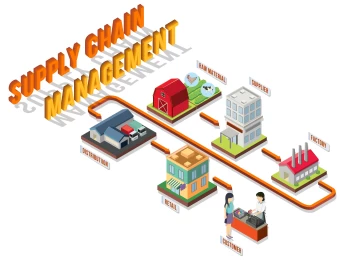- Table of Contents
- What is Agile Methodology and Why Does it Matter?
- What are the Key Principles of Agile Methodology?
- How Can Agile Methods Help with Change Management?
- What Challenges Arise When Implementing Agile in Change Management?
- What Strategies Can Enhance Agile Change Management Success?
- How is Agile Evolving in Change Management Practices?
Introduction
In today's fast-paced and dynamic business environment, organizations are constantly faced with the challenge of managing change effectively. Whether it's adapting to market shifts, implementing new technologies, or responding to customer demands, the ability to navigate change with agility has become a critical success factor.
This article delves into the intersection of Agile methodology and change management, exploring how Agile principles and practices are revolutionizing traditional approaches to change. We'll uncover the key concepts, strategies, and trends shaping the evolution of Agile in change management practices, highlighting the benefits, challenges, and best practices for organizations seeking to embrace Agile as a catalyst for successful change initiatives.
From understanding the fundamentals of Agile methodology to examining real-world case studies and future trends, this article serves as a comprehensive guide for leaders, practitioners, and change agents looking to harness the power of Agile in driving meaningful and sustainable transformations.
Join us on this journey as we explore how Agile is transforming the way organizations approach change, empower teams, and achieve strategic goals in an era of constant disruption and innovation.
What is Agile Methodology and Why Does it Matter?
Agile methodology is a versatile and iterative project management approach, often utilized in software development but applicable across diverse industries. It emphasizes collaboration, adaptability, and delivering value to customers through incremental improvements.
The importance of agile methodology lies in its ability to:
- Respond to Change: Agile teams can quickly adapt to changing requirements or priorities, allowing for greater responsiveness in dynamic environments.
- Enhance Customer Satisfaction: By focusing on delivering value in small increments and incorporating customer feedback throughout the process, agile methodologies prioritize customer satisfaction and product relevance.
- Improve Team Collaboration: Agile promotes cross-functional teams working closely together, fostering better communication, collaboration, and collective ownership of project outcomes.
- Increase Transparency: Agile practices such as daily stand-up meetings and regular demonstrations ensure transparency and visibility into project progress, reducing misunderstandings and risks.
- Drive Innovation: The iterative nature of agile encourages experimentation, continuous improvement, and innovation, enabling teams to explore new ideas and solutions effectively.
- Optimize Resource Utilization: Agile allows teams to prioritize tasks based on value and optimize resource allocation, leading to more efficient and effective use of time and resources.
Overall, agile methodology enables organizations to deliver high-quality products or services faster, with greater customer satisfaction, improved team dynamics, and enhanced adaptability to market changes.
What are the Key Principles of Agile Methodology?
The key principles of Agile methodology, as outlined in the Agile Manifesto, are:
- Individuals and Interactions over Processes and Tools: Emphasizes the importance of human communication, collaboration, and teamwork over relying solely on tools or rigid processes.
- Working Software/Product over Comprehensive Documentation: Prioritizes delivering a working product or software that meets customer needs over extensive documentation. Documentation is important but should not impede progress or become a substitute for working solutions.
- Customer Collaboration over Contract Negotiation: Advocates for active involvement and collaboration with customers throughout the project, focusing on understanding and responding to their evolving requirements and feedback.
- Responding to Change over Following a Plan: Acknowledges that change is inevitable and encourages teams to embrace change, adapt quickly, and adjust plans based on new information or priorities.
These principles are supported by a core set of values:
- Individuals and interactions over processes and tools
- Working software over comprehensive documentation
- Customer collaboration over contract negotiation
- Responding to change over following a plan
These principles guide Agile teams in fostering a culture of collaboration, continuous improvement, flexibility, and customer-centricity, ultimately leading to more successful and adaptive project outcomes.
How Can Agile Methods Help with Change Management?
Agile methods can significantly aid in change management by providing a structured yet flexible framework for managing and implementing changes effectively. Here are several ways Agile methods help with change management:
- Iterative Approach: Agile's iterative development cycles allow changes to be implemented incrementally. This reduces the risk associated with large-scale changes and provides opportunities to gather feedback and make adjustments throughout the process.
- Adaptability: Agile teams are accustomed to adapting to change quickly. They can easily incorporate new requirements, address unexpected challenges, and pivot their strategies as needed, making them well-suited for managing organizational changes.
- Collaborative Environment: Agile promotes collaboration among cross-functional teams, stakeholders, and end-users. This collaborative environment fosters open communication, knowledge sharing, and a sense of ownership, which are crucial for successful change management.
- Continuous Improvement: Agile methodologies emphasize continuous improvement and learning. Teams regularly reflect on their processes, identify areas for enhancement, and implement changes iteratively, aligning well with the continuous improvement mindset essential for effective change management.
- Focus on Value Delivery: Agile prioritizes delivering value to customers and stakeholders. This focus ensures that changes are aligned with business objectives, customer needs, andstrategic goals, resulting in more meaningful and impactful outcomes.
- Transparency and Visibility: Agile practices such as daily stand-up meetings, regular demos, andvisual management tools provide transparency and visibility into project progress, potential roadblocks, and the impact of changes. This transparency enables better decision-making and risk management during change initiatives.
- Empowered Teams: Agile empowers teams to take ownership of their work, make decisions autonomously, and adapt their approaches based on real-time feedback. Empowered teams are more resilient and better equipped to navigate complex changes effectively.
Table 1:Key Benefits of Agile Methods in Change Management
Benefit | Description |
Iterative Approach | Agile's iterative cycles enable incremental changes, reducing risk and allowing feedback-driven adjustments. |
Adaptability | Agile teams adeptly handle change, incorporating new requirements and pivoting strategies as needed. |
Collaborative Environment | Agile fosters collaboration, promoting open communication, knowledge sharing, and ownership among teams and stakeholders. |
Continuous Improvement | Agile emphasizes learning and iterative enhancement, aligning with a mindset of continual improvement crucial for effective change management. |
Focus on Value Delivery | Agile prioritizes delivering value to customers, ensuring changes align with business objectives and strategic goals for impactful outcomes. |
Transparency and Visibility | Agile practices offer transparency into project progress, roadblocks, and change impacts, aiding decision-making and risk management. |
Empowered Teams | Agile empowers teams to make decisions, take ownership, and adapt based on feedback, enhancing resilience during complex changes. |
By leveraging Agile methods, organizations can streamline their change management processes, increase responsiveness to change, foster a culture of collaboration and continuous improvement, and ultimately achieve successful outcomes during periods of transition and transformation.
What Challenges Arise When Implementing Agile in Change Management?
Implementing Agile in change management can be transformative, but it also presents several challenges that organizations must address effectively. Some of these challenges include:
- Cultural Resistance: Introducing Agile methodologies may face resistance from employees who are accustomed to traditional hierarchical structures or rigid processes. Overcoming cultural resistance requires effective change management strategies, clear communication, and ongoing education about Agile principles and benefits.
- Skill Gaps: Agile requires a different set of skills and mindset compared to traditional project management approaches. Organizations may face challenges in upskilling employees, hiring Agile-experienced talent, and ensuring teams have the necessary knowledge to implement Agile practices effectively.
- Integration with Existing Processes: Integrating Agile methodologies with existing processes, systems, and tools can be complex. Ensuring seamless integration, data consistency, and compatibility between Agile and non-Agile teams or projects requires careful planning, collaboration, and technical expertise.
- Scope Management: Agile's iterative and incremental approach can lead to scope creep if not managed effectively. Balancing flexibility with scope management requires strong project governance, prioritization techniques, and regular reassessment of project goals and requirements.
- Cross-Functional Collaboration: Agile emphasizes cross-functional collaboration, which may require breaking down silos and improving communication among diverse teams. Overcoming communication barriers, aligning goals, and fostering a culture of collaboration are key challenges in Agile change management.
- Change in Leadership Style: Agile often requires a shift in leadership style from command and control to servant leadership or facilitative leadership. Leaders may need training and support to adapt their leadership approach, empower teams, and create an environment conducive to Agile practices.
- Measuring Success: Traditional metrics may not effectively measure the success of Agile initiatives. Identifying and defining relevant Agile metrics, such as cycle time, team velocity, customer satisfaction, and business value delivered, is essential for evaluating progress and demonstrating the impact of Agile in change management.
Addressing these challenges requires a holistic approach, including organizational readiness assessments, stakeholder engagement, training and development programs, iterative improvements, and continuous learning and adaptation. By proactively addressing these challenges, organizations can maximize the benefits of Agile in change management and drive successful transformations.
What Strategies Can Enhance Agile Change Management Success?
Enhancing Agile change management success involves implementing strategies that address key challenges, foster a culture of agility, and optimize the use of Agile methodologies. Here are some strategies to enhance Agile change management success:
- Build a Strong Foundation:
- Conduct an organizational readiness assessment to evaluate readiness for Agile adoption.
- Establish clear goals, objectives, and expected outcomes for Agile change initiatives.
- Invest in Agile training & development programs for employees at all levels.
- Emphasize Change Leadership:
- Develop strong change leadership capabilities among executives, managers, and team leaders.
- Foster a culture of trust, transparency, and collaboration to support Agile practices.
- Encourage servant leadership and empower teams to make decisions and drive change.
- Align Agile with Business Objectives:
- Ensure alignment between Agile initiatives and strategic business objectives.
- Involve key stakeholders in defining priorities, setting expectations, and validating outcomes.
- Continuously communicate the value proposition of Agile in achieving business goals.
- Promote Cross-Functional Collaboration:
- Encourage collaboration and knowledge sharing among cross-functional teams.
- Create dedicated spaces or platforms for team collaboration, brainstorming, and problem-solving.
- Foster a culture of continuous feedback and improvement through regular retrospectives and reviews.
- Adopt Agile Practices Incrementally:
- Begin with pilot projects or teams to trial Agile practices and collect feedback.
- Gradually scale Agile adoption based on lessons learned and best practices identified.
- Tailor Agile methodologies to fit the organization's unique context and needs.
- Implement Agile Governance and Metrics:
- Establish Agile governance structures to provide guidance, oversight, and support.
- Define and track relevant Agile metrics to measure progress, performance, and business value.
- Use data-driven insights to make informed decisions, identify areas for improvement, and optimize Agile processes.
- Enable Continuous Learning and Adaptation:
- Promote a culture of continual learning, experimentation, and adaptation.
- Provide resources, tools, and opportunities for skill development and knowledge sharing.
- Embrace feedback loops, iterate on processes, and be open to refining Agile practices based on lessons learned.
By implementing these strategies, organizations can enhance Agile change management success, improve agility, drive innovation, and achieve meaningful and sustainable outcomes in their change initiatives.
How is Agile Evolving in Change Management Practices?
Agile methodologies continue to evolve in change management practices to address emerging challenges, leverage new technologies, and optimize performance. Here are some key trends and developments in how Agile is evolving in change management practices:
- Agile at Scale: Organizations are scaling Agile beyond individual teams to entire enterprises. This involves adopting frameworks such as SAFe (Scaled Agile Framework), LeSS (Large Scale Scrum), or DAD (Disciplined Agile Delivery) to coordinate Agile practices across multiple teams, departments, and business units. Scaling Agile enables alignment, collaboration, and faster delivery of value at an enterprise level.
- Hybrid Approaches: Hybrid Agile methodologies are gaining popularity, combining Agile principles with traditional project management practices. This allows organizations to leverage the flexibility of Agile while maintaining governance, risk management, and compliance requirements typical in large enterprises or regulated industries.
- Agile Beyond IT: Agile is expanding beyond its origins in software development to other areas such as marketing, HR, finance, and operations. This trend, often referred to as "Business Agility," involves applying Agile principles and practices to improve responsiveness, innovation, and customer value across the entire organization.
- DevOps Integration: Agile and DevOps are becoming increasingly integrated to streamline the entire software development and delivery lifecycle. DevOps practices such as continuous integration, continuous delivery, and automated testing complement Agile's iterative and collaborative approach, enabling faster and more reliable software releases.
- Agile AI and Automation: Organizations are leveraging artificial intelligence (AI) and automation to enhance Agile practices. This includes using AI for data analytics, predictive modeling, and decision-making support, as well as automation tools for testing, deployment, and workflow management, improving efficiency and reducing manual efforts.
- Agile Metrics and Analytics: There is a growing focus on measuring Agile performance using meaningful metrics and analytics. Organizations are leveraging data-driven insights to track key performance indicators (KPIs), monitor team productivity, identify bottlenecks, and continuously improve Agile processes for better outcomes.
- Agile Mindset and Culture: Agile is increasingly recognized as a mindset and cultural shift rather than just a set of practices. Organizations are investing in fostering an Agile culture characterized by collaboration, empowerment, trust, learning, and adaptability, enabling teams to thrive in dynamic and complex environments.
Table 2:Key trends and developments in Agile's evolution within change management practices
Trend/Development | Description |
Agile at Scale | Scaling Agile beyond individual teams to entire enterprises using frameworks like SAFe, LeSS, or DAD for alignment and faster value delivery at an enterprise level. |
Hybrid Approaches | Combining Agile principles with traditional project management practices to maintain governance and compliance in large enterprises or regulated industries. |
Agile Beyond IT | Expanding Agile beyond software development into areas like marketing, HR, finance, and operations for improved responsiveness and customer value across the organization. |
DevOps Integration | Integrating Agile and DevOps practices for streamlined software development, continuous delivery, and automated testing, ensuring faster and reliable software releases. |
Agile AI and Automation | Leveraging artificial intelligence and automation in Agile practices for data analytics, predictive modeling, automated testing, and workflow management, enhancing efficiency. |
Agile Metrics and Analytics | Measuring Agile performance using meaningful metrics and data-driven insights to track KPIs, monitor team productivity, identify bottlenecks, and improve Agile processes. |
Agile Mindset and Culture | Fostering an Agile culture characterized by collaboration, empowerment, trust, learning, and adaptability to enable teams to thrive in dynamic and complex environments. |
Overall, Agile continues to evolve in change management practices by embracing scalability, hybrid approaches, cross-functional integration, technology advancements, data-driven decision-making, and a focus on fostering Agile mindset and culture. These evolutions enable organizations to stay competitive, innovate rapidly, and drive successful transformations in an ever-changing business landscape.
Conclusion
In conclusion, Agile methodology has transformed change management practices by prioritizing adaptability, collaboration, and customer-centricity. It offers a transformative approach to navigating change, enabling organizations to respond quickly to evolving needs, drive innovation, and deliver value more effectively. While challenges exist, embracing Agile principles and evolving trends can empower organizations to thrive in an ever-changing business landscape. By adopting Agile as a strategic framework for change management, organizations can unlock new opportunities, enhance their competitive advantage, and achieve sustainable success in today's dynamic environment.


























